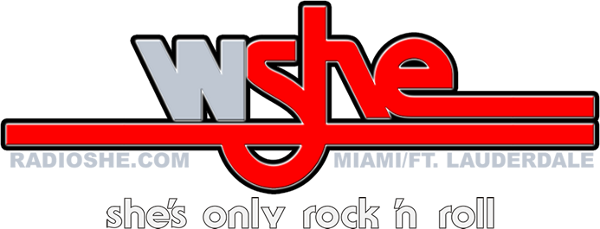
|
|


Ronnie Hawkins and the Hawks worked their way up to Canada a few times before Hawkins realized that in the South, they were one of several good bands playing a rockabilly style that was rapidly becoming dated, whereas up in Toronto, they were unique. As far as hipper Torontonians felt, they played the fastest, most violent rock'n'roll ever heard. Logic and money being what they are, the Hawks made Toronto their adopted home in 1958.
One by one, the other members of what would be "the Band" entered the fold as various original Hawks succumbed to homesickness and headed back south. Jaime Robbie Robertson was one of the first recruits. A refugee from Robbie and the Robots, Thumper and the Trambones and Little Caesar and the Consuls, Robertson, a few months shy of his sixteenth birthday, joined early in 1960, initially on bass.
Ronnie Hawkins released nine 45s as well as a couple of albums for Roulette from 1959 to 1963. Levon Helm played drums on every one of them. Robbie Robertson and Rick Danko play on the last three singles, Richard Manuel on the last two, and Garth Hudson is only heard on the very final outing. (King Curtis can also be heard on a number of these tracks.)
After scoring a minor 1963 hit with a cover of "Bo Diddley", the group left Hawkins to tour on their own, performing on the American club circuit under various names including Levon & the Hawks, the Crackers and the Canadian Squires, while honing a loud, gritty repertoire, heavily influenced by R&B, soul and gospel. Upon recording two songs in New York, "Go Go Liza Jane" and "The Stones I Throw", Levon & the Hawks returned to Canada. While performing a club date, they were spotted by fledgling blues singer John Hammond Jr., who recruited them to play on his 1964 debut single "I Wish You Would".
In the summer of 1965, a secretary from Toronto named Mary Martin, who was working for Bob Dylan's manager Albert Grossman, suggested to Dylan that the Hawks might be the appropriate ensemble to accompany him on his first electric tour. At the same time, Martin was also working on the Hawks' end of things, acquainting Rick Danko, for one, with Dylan's current material.
The Hawks were then engaged in a four-month stand in Somers Point, New Jersey, setting a thousand or more patrons on fire nightly with their heady brew of blues and R&B. Dylan checked them out and hired Robertson initially for two gigs in late August, at Forest Hills Tennis Stadium in New York and the Hollywood Bowl in Los Angeles. Robertson, unimpressed with Dylan's drummer, suggested Dylan also hire Levon Helm. Robertson, Helm, Harvey Brooks on bass and Al Kooper on keyboards set out to endure the chorus of boos that greeted Dylan's second and third electric gigs. Brooks would go on to play in "The Electric Flag" with Mike Bloomfield and Al Kooper would form "Blood, Sweat and Tears".
Dylan and Helm soon had a falling out, but the rest of the group, with replacement drummer Mickey Jones, subsequently signed on for Dylan's landmark 1965-1966 world tour, sparking a longstanding collaboration that resulted in some of the most brilliant music in rock history.
In 1966, Dylan was seriously injured in a motorcycle accident. During his recovery period, he sought refuge in the secluded upstate New York area of Woodstock, and the Hawks (newly reunited with Helm, soon joined him there, taking up residence in a large, pink sided house nicknamed "Big Pink".
Every day, Robertson, Danko, Manuel, Helm, Hudson and Dylan would congregate and for two or three hours they would write songs, throw ideas back and forth, play older songs from a multiplicity of genres and occasionally lay some of it down on a two-track recorder in the basement. One can hear some of this work on the double album "The Basement Tapes", recorded in 1967 in the actual basement of Big Pink (finally released officially in 1975).
The Band, began to develop the lyrical style of their finest work, and they ultimately began crafting material independently of Dylan. Finally, in 1968, The Band's debut LP "Music From Big Pink" appeared to widespread critical acclaim, with songs like "The Weight" and "We Can Talk About It Now", emerging as instant classics. Upon moving to Hollywood, The Band began recording their second LP, a self-titled masterpiece issued in 1969; a commercial success as well as a critical favourite, both "The Night They Drove Old Dixie Down" and "Up On Cripple Creek" became FM radio favourites, and established Robertson among the greatest songwriting talents of his generation.
The Band's first headlining tour followed, with life on the road subsequently becoming the subject of 1970's "Stage Fright", which sacrificed the focus on history and myth so prevalent on the first two records in favour of a more contemporary vantage point. "Cahoots" followed a year later, and featured a guest appearance by Van Morrison on the track "4% Pantomime".
"Rock of Ages", a two-record live set arranged by Allan Toussaint, was issued in 1972. For 1973's "Moondog Matinee", an affectionate tribute to the formative days of rock 'n' roll named in honour of influential disc jockey Alan Freed's radio show, The Band dipped into their past to resurrect favourite chestnuts like "The Great Pretender" and "A Change Is Gonna Come". They eventually reunited with Dylan, backing him on 1974's studio LP "Planet Waves" as well as on the massive tour later documented on the "Before The Flood" live set. In 1975, The Band released "Northern Lights-Southern Cross", their first collection of new material in four years. After Robertson produced Neil Diamond's 1976 effort "Beautiful Noise", the group reconvened for "Islands", issued in 1977.
Prior to Islands' release, The Band announced their break-up, with a celebratory final concert to follow at San Francisco's Winterland on Thanksgiving Day, 1976. Director Martin Scorsese filmed the event, named "The Last Waltz". A star-studded group of friends and admirers including Dylan, Van Morrison, Eric Clapton, Neil Young and Muddy Waters also took the stage, yielding a three-LP set released in 1977.
In the wake of The Band's demise, Helm pursued both acting and musical careers, while Danko quickly resurfaced with a 1977 self-titled solo LP; Hudson turned to session work, Manuel appeared to retire, and Robertson maintained a low profile, scoring several subsequent Martin Scorsese films and starring in the 1980 feature "Carny". In 1983, The Band regrouped; but Robertson refused to take part in the proceedings, and was replaced by guitarist Jimmy Weider.
The group spent the next several years on the road before tragedy struck. After touring with the others for three years, Manuel was found dead in a Florida motel room on March 4th, 1986. Reportedly suffering from depression, he hanged himself following a show. His fellow musicians reported that he had shown no signs that evening of anything bothering him.
In 1987, Robbie Robertson finally issued a solo album; its lead track, "Fallen Angel", was a heartfelt tribute to Manuel, but while both Danko and Hudson made guest appearances on the record, Robertson again refused to rejoin when the remaining trio continued touring throughout the late 1980s. His solo album reached #38 and received critical praise, and a second album, "Storyville", recorded in New Orleans, was released in 1991. It was kind of a "concept album based on a short story", and had, like its 1987 predecessor, an impressive list of guests, including Hudson and Danko. It was not a commercial success, though.
The other three original members of The Band, Danko, Helm and Hudson, continued touring in the '90s, including performances at Woodstock, the Bob Dylan jubilee, the '93 album "Jericho" and European Tour '94. They started working on a follow-up in the summer of '95, which was released under the title "High on the Hog" in February 1996. The Band's wonderful, acoustic and laid-back album "Jubilation" was released in September 1998 and was to be their last, as the three original members finally went their separate ways. Robbie Robertson had no involvement in any of the work done by the reformed Band.
Sadly, Rick Danko died in his sleep at his home in Woodstock, New York, on December 10th, 1999. The surving members remained active in music to one degree or another.
For a time Levon Helm was diagnosed with throat cancer and could not sing, but his 2007 comeback album. "Dirt Farmer" earned the Grammy Award for Best Traditional Folk Album in February 2008. In November of that year, Rolling Stone magazine ranked him #91 in the list of The 100 Greatest Singers of All Time. In 2010, "Electric Dirt, his 2009 follow-up to "Dirt Farmer", won the first ever Grammy Award for Best Americana Album. In 2011, his live album "Ramble at the Ryma was nominated in the same category and won another Grammy.
Garth Hudson played keyboards on the first three albums by The Call and also released two solo CDs, "The Sea To The North" in 2001, and "LIVE at the WOLF" in 2005, both featuring his wife, Maud, on vocals. He has also kept busy as an in-demand studio musician. In 2010, Hudson released "Garth Hudson Presents: A Canadian Celebration of The Band" featuring Canadian artists covering songs that were recorded by The Band.
Robbie Robertson became a music producer and contributed to several movie soundtracks, including The King of Comedy, The Color of Money, Casino, The Departed, Gangs of New York, Ladder 49 and Shutter Island. In 2011, his LP "How to Become Clairvoyant" charted at #13 in the US and #56 in the UK.
In 2004, Rolling Stone ranked The Band at #50 on their list of the 100 Greatest Artists of All Time. They also received a Lifetime Achievement Grammy Award on February 9th, 2008, but there was no reunion of all three living members. At
Helm's encouragement, Capitol re-issued the first three The Band albums as a box set called "Three of a Kind" in 2011.
Levon Helm passed away at the age of 71 on April 19th, 2012 after a long battle with throat cancer. He was buried in Woodstock Cemetery next to Rick Danko.


